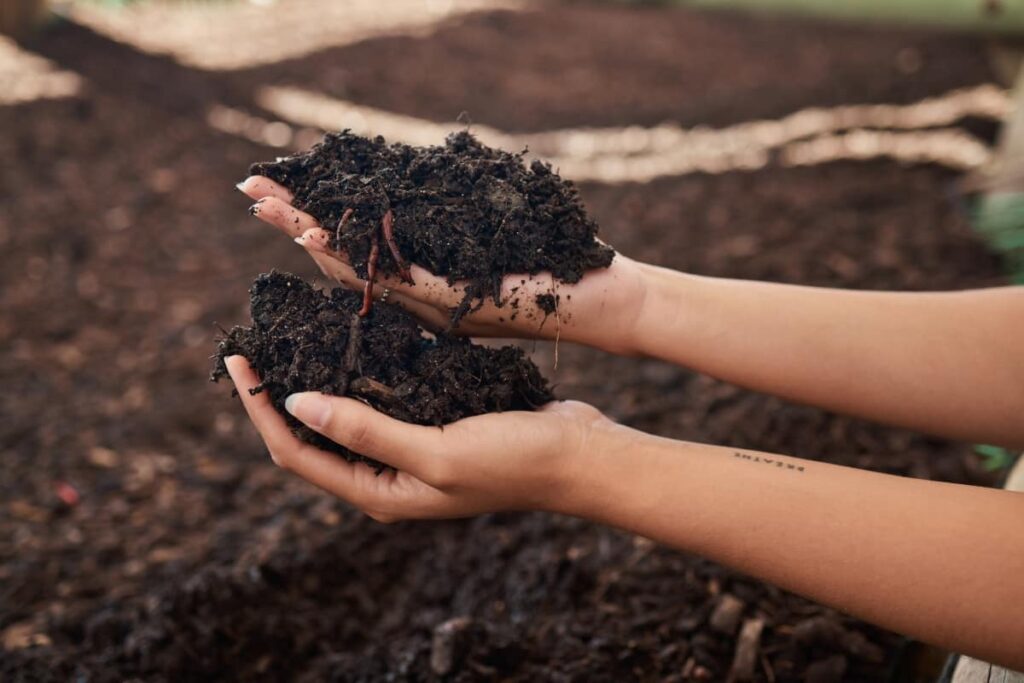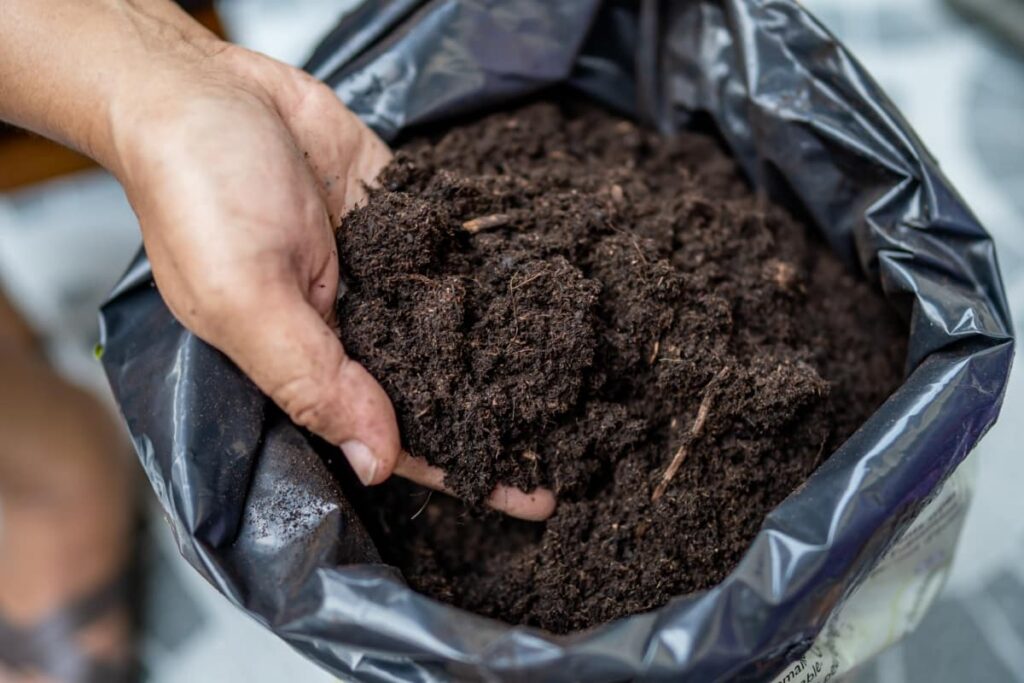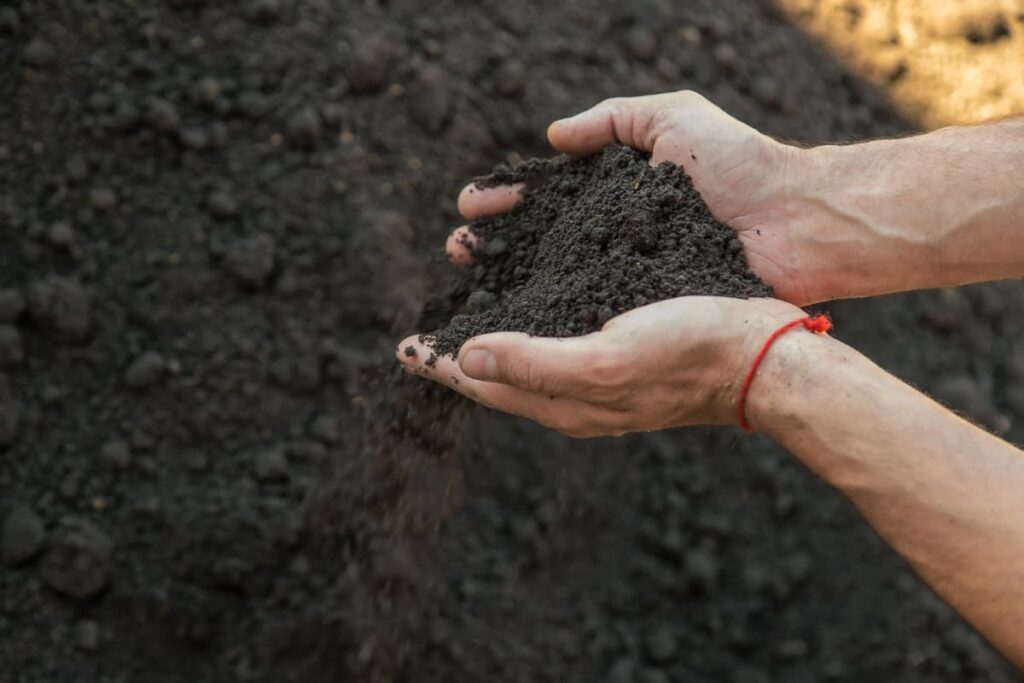Organic compost production is a process of transforming organic waste materials into nutrient-rich soil amendment that can enhance the fertility and productivity of agricultural lands. However, organic compost production also involves various costs that need to be considered and managed by the producers. In this article, we will explore the cost-efficient techniques and factors that affect the cost of organic compost production, as well as provide a comparative cost analysis of organic versus conventional compost production.

Organic Compost Production Cost
Cost Analysis of Starting an Organic Compost Business
Starting an organic compost business requires a significant initial investment in terms of land, infrastructure, equipment, materials, and permits. The land cost depends on the location, size, and availability of the site, as well as the zoning and environmental regulations. The infrastructure cost includes the construction or renovation of buildings, sheds, fences, roads, drainage systems, and utilities.
The equipment cost covers the purchase or rental of machines and tools such as shredders, mixers, turners, screens, loaders, trucks, and scales. The cost of materials includes the acquisition or collection of organic waste sources such as manure, crop residues, food scraps, yard trimmings, and wood chips. The permit cost involves the fees and taxes for obtaining the necessary licenses and certifications from the local, state, and federal authorities.
Starting an organic compost business, costs vary based on the scale, scope, and quality of the compost product. The average capital cost for small-scale facilities is $1.2 million, while large-scale facilities cost $11.5 million. Operating costs range from $55 to $30 per ton of compost produced.
Breakdown of Materials and Equipment Costs in Organic Composting
Organic compost production involves two main costs: materials and equipment. Materials costs depend on the type, quality, and availability of organic waste sources, as well as transportation and handling costs. Equipment cost depends on the type, size, and efficiency of machines and tools used for compost processing. To reduce materials costs, source organic waste locally or from nearby farms, markets, or municipalities.
Transportation and handling costs can be reduced by using efficient vehicles and methods for collecting and delivering waste materials. Equipment costs can be reduced by choosing appropriate machines and tools that match the operation’s scale and needs and maintaining them regularly. The average materials cost for producing one cubic yard of compost is about $8.50, while the average equipment cost for producing one cubic yard of compost is about $3.50. Therefore, the total materials and equipment cost for producing one cubic yard of compost is about $12.
Organic Compost Production: Labor Cost Insights
Labor costs in organic compost production are influenced by factors such as the number, skill, productivity, and labor market conditions. It includes wages, benefits, and management costs for tasks like collecting, sorting, shredding, mixing, turning, curing, screening, bagging, and selling the compost product.
To reduce labor costs, businesses can hire skilled workers, provide adequate training, and offer incentives to improve performance and motivation. Ultimately, reducing labor costs is a crucial aspect of organic compost production. The average labor cost for producing one cubic yard of compost is about $5. Therefore, the total labor cost for producing one cubic yard of compost is about $5.
Understanding the Operational Costs of Organic Compost Facilities
Feedstock acquisition costs involve collecting, transporting, and processing organic waste materials used to make compost. These costs can range from negative to positive depending on the source and quality of the feedstock. Labor costs involve hiring and training staff to operate and maintain the compost facility, including benefits, taxes, insurance, and safety equipment. Equipment costs include purchasing, renting, or leasing equipment for compost processing and handling.
In case you missed it: 10 Best Compost Brands for Vegetable Plants in India: Organic, Natural, and Quality Compost Brands

Land costs depend on the location, size, zoning, and availability of the land and can include taxes, fees, permits, and environmental assessments. Utility costs involve using water, electricity, gas, or other utilities for the compost facility, depending on the type and amount required by the composting process. Marketing costs include advertising, packaging, labeling, distribution, quality testing, and customer service expenses. The average operational cost of organic compost facilities in North America was $24 per ton of feedstock.
Cost-Efficient Techniques in Organic Compost Production
Organic compost production is a process that converts organic waste materials into valuable soil amendments, enhancing soil quality and crop productivity. However, it incurs significant costs for feedstock acquisition, labor, equipment, land, utilities, and marketing. Cost-efficient techniques should be adopted to reduce these costs and increase profitability. Techniques include source separation, on-site composting, co-composting, aerated static pile (ASP) composting, and vermicomposting.
Source separation involves separating organic waste materials from other types of waste at the point of generation, reducing feedstock acquisition costs, and improving feedstock quality. On-site composting minimizes transportation costs and uses simple, low-tech methods like pile or bin composting. Co-composting mixes different types of organic waste materials to create a balanced feedstock, reducing feedstock acquisition costs and improving feedstock quality.
Aerated static pile (ASP) composting forms organic waste materials into piles or windrows and aerates them with forced air. This reduces labor and equipment costs, accelerates the composting process, and reduces water loss through evaporation. Vermicomposting uses earthworms to digest organic waste materials, producing high-quality compost products. These techniques can reduce the operational costs of organic compost production by 10% to 50% compared to conventional methods.
Impact of Scale on Organic Compost Production Costs
Scale is a crucial factor in organic compost production, affecting costs and revenues. It refers to the size or capacity of the facility, measured by the amount of feedstock processed or compost produced per unit of time. The impact of scale on organic compost production costs can be positive, negative, economic, or diseconomies of scale. The average cost per unit of output by spreading fixed costs and a larger volume of production, achieving higher efficiency and productivity, and benefiting from bulk discounts and bargaining power.
Diseconomies of scale, on the other hand, increase the average cost per unit of output by creating coordination and communication problems, increasing complexity and bureaucracy, and facing regulatory and environmental constraints. The study suggests that small-scale compost facilities (less than 5,000 tons per year) can be viable if they use low-cost feedstock (e.g., yard waste), low-tech methods (e.g., windrow composting), and local markets (e.g., home gardeners).
Medium-scale compost facilities (5,000 to 50,000 tons per year) can be viable if they use mixed-cost feedstock (e.g., food waste), medium-tech methods (e.g., ASP composting), and regional markets (e.g., landscapers). Large-scale compost facilities (more than 50,000 tons per year) can be viable if they use high-cost feedstock (e.g., biosolids), high-tech methods (e.g., in-vessel composting), and national markets (e.g., farmers).
Comparative Cost Analysis: Organic vs. Conventional Compost Production
Organic compost production converts organic waste materials into valuable soil amendments, improving soil fertility and reducing the need for synthetic fertilizers and pesticides. However, it may have higher costs than conventional compost production.
In case you missed it: How to Compost Kitchen Waste with Worms: A Guide to Kitchen Vermiculture

Factors affecting the cost analysis include the availability and cost of organic waste materials, transportation and handling costs, type and size of composting systems, labor and equipment costs, quality and quantity of the finished compost product, and environmental benefits. To conduct a comparative cost analysis, estimate the costs and benefits of both options and compare them using indicators like unit cost or break-even point.
Budget Planning for Organic Compost Production Projects
Organic compost production is a sustainable method that converts organic waste into soil amendments, improving soil fertility, and reducing the need for fertilizers and pesticides. Careful planning and management to ensure financial viability and sustainability. Budget planning is crucial for this process, estimating income and expenses over time.
Key components include revenue, costs, cash flow, balance sheet, and income statement. To prepare a budget plan, relevant data, tools, and assumptions must be collected and analyzed, and various scenarios considered, such as best-case, worst-case, or expected-case scenarios.
Organic Compost Production: Understanding Regulatory and Certification Costs
Organic compost production converts organic waste into soil amendments, improving soil fertility and reducing the need for synthetic fertilizers and pesticides. However, it requires compliance with regulatory and certification requirements. These costs include licensing fees, testing fees, inspection fees, certification fees, training fees, and legal fees. These fees help ensure the quality and safety of the compost and may include licensing, testing, inspection, certification, training, and legal fees. These costs help maintain the sustainability of organic compost production.
In case you missed it: How to Make Sheep Manure Compost: A Step-by-Step Guide to Using in Your Garden

Conclusion
In exploring cost-efficient techniques for organic compost production, it is evident that optimizing raw material sourcing, efficient composting methods, and streamlined operations contribute to reduced production costs. Implementing these strategies ensures sustainable and economically viable organic compost production, aligning with environmentally conscious practices in agriculture.
- Crops Grown in Summer Season: Best Choices for Summer Gardening
- Organic Pest Control for Tomato Farming
- How to Maximize Sheep Farming Profit
- Broccoli Varieties: Choosing the Right Cultivars for Your Farm
- How to Raise Pigs in Your Own Backyard: A Comprehensive Guide
- Budget Friendly Sheep Shed Ideas: Cheap and Low-Cost Tips
- How Much Do Cattle Farmers Make: Revenue Streams in Cattle Farming
- Management Pests and Diseases in Your Cotton Field
- Sheep Farming Business Plan for Beginners
